
Eve Online | Cosmos Amarr Material Farming
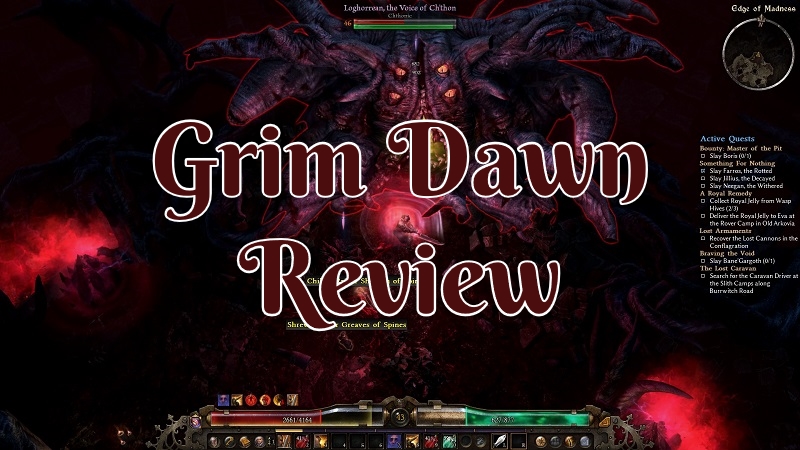
Grim Dawn an ARPG set in apocalyptic settings where you hack and slash your way through foes in search of loot and adventure.
This game has a lot to it that makes it stand out. From all the combinations you can go with making a class fit your playstyle. The Devotion system that allows you to further take your build in the direction you want to take it. There were also some fun options they gave the player for acquiring gear and a way to filter what drops making it easier for possible upgrades to stand out. While you’re starting city was not as deep as I had hoped you could have some fun upgrading it. You also had the fun of exploring and discovering things for the first time sometimes beyond the first games difficulty when you realized you missed something the first time.
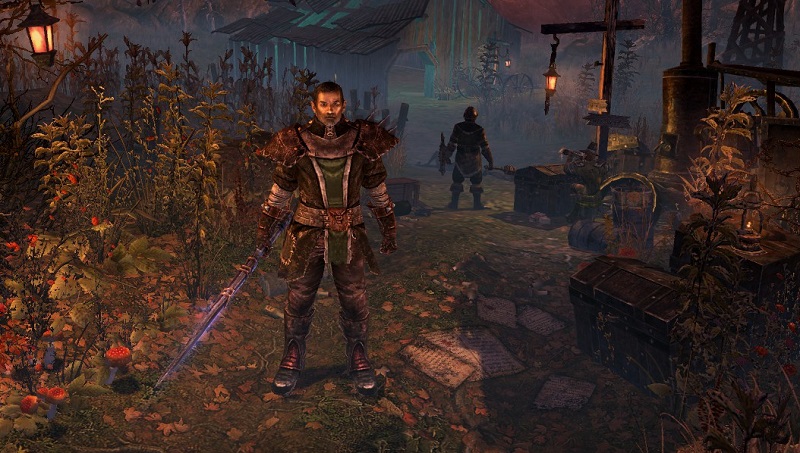
Grim Dawn has some similarities to games like Diablo and Path of Exile while still bringing its own uniqueness to the genre of ARPG that it has a seat at the table.
On the face value, you have different acts and as you progress you unlock harder difficulty after beating the game like in Diablo. You start off on normal with the ability to enhance the base difficulty making it veteran if you choose. Once you beat the game you get to replay it over again on Elite and then Ultimate. Much like you would deal with in Path of Exile each difficulty as a resistance penalty with the expect that you need to be in that difficulty instead of just suffering from it once you kill the final boss in the previous difficulties.
Since I have a way to much play time in both Diablo and Path of Exile I’ll sometimes be comparing and contrasting these to Grim Dawn itself. As I feel this is a game that not many seem to know about but might be something you end up enjoying if you liked either of those two.

Grim Dawn uses a two class system giving you the power to pick and choose what you want to create. You start off with one class at the start. Later on, you open up the opportunity to select another one when you want to. This creates a lot of fun replayability as have a number of classes you can end up making.
I myself started off with a Soldier focusing on using a two-handed sword and picking up some much-needed defense ability from the skill tree. After I was almost done with the majority of points I wanted from that class I picked Nightblade which also uses melee but was more focused on offensive take things out quickly which seemed to fit really nicely into what I was playing. I was not that adventurous in my first playthrough of the game to find an oddball combination that worked out amazing. I could see some people spending a lot of time looking over the skill trees of different classes and creating something quite unique in both playstyle and how it comes together.
As with each class you need level up that particular base skill itself to keep unlocking more of the tree. You also pick up some much-needed stats for the kinds of items that the class tends to use. Some of the skills in the tree even had other requirements of needing to be picked up first.

You also had a mix of passive and active skills. Some of them like my main attack I ended up using Cadence you use every time to attack. You also had a skill you could activate like an aura you died like called Field Commander that gave all allies within my radius that increased everyone offensive and defensive capabilities. I also had skill like War Cry that affected the monster in radius from where I cast it. It was nice not having to cast everything all the time and even reserve some better skills for when they were needed so they would not be in cooldown when it counted.
This part of the game is much deeper than just the explanation of what I ended up playing. I still have not taken mine out as far as it could go as far as skills, gear, and other things that add up to a unique experience.
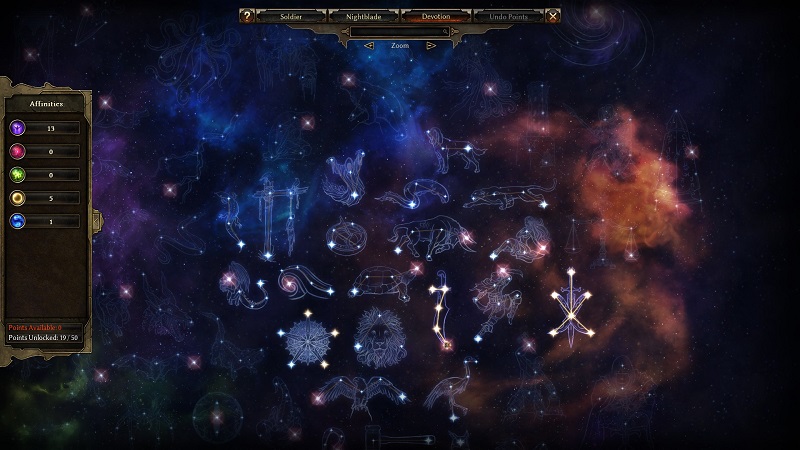
This system was quite overwhelming when you first open up that start map for the first time. While it does have some organization in the form of affinities being needed to unlock deeper and better options. It a system in this game I’m struggling with still with how open and extensive it is.

At least for the base game acquiring devotion they created a fun way to go about it. Throughout the world, you would run into shrines and have to engage with them in one form or another. It could be as simple as turning in an item. As far as clearing out a wave of heroes monsters that spawn. Sometime you would end up going on a small adventure to uncover what you needed to find to unlock them. Each time you got a single point.
I also found the world map to be rather kind in showing shrines if you came close enough but passed over it. That way the player at least had some clue they missed something or even better when you lack what is required and end up going back at a later time to finish them.
All the trees inside of this system give the player quite a wide range of abilities, passives and other stuff. I ended getting Assassin’s Mark which then could be bound to my main skill and it even levels up from being gaining experience.
It’s fun when you get the creative freedom to pick what you want without much constraint. I’m sure many of them were made in mind of using one way or another. Players on the other hand always seem to find a creative way to combine things to create synergies and this just feels like you could take your class even further into creating something unique to play.

Like in most ARPG Grim Dawn has a heavy focus on gear. You could go out in the more traditional way of just killing the monster or acquire it by other means. Some of it is quite common and not even worth picking up while other stuff can be build defining or provide much-needed resistance.
On the harder settings once you start facing around level fifty monsters legendary rarity items can start to drop which can contain powerful abilities. The gear in the game can have triggerable abilities or increase your skill level. Some of them are auto-activated with a cooldown by taking or dealing damage while others are a manual use skill. I’ve always loved the idea of gear having abilities on them it helps better define that playstyle you want around a character.
This does make it a little different from trying gear out an alt than the other two games. Grim Dawn focuses more around making it easier to farm reputation by allowing you to trade documents to your alts that increase the rate you gain faction. Which can be very important as they different tiers unlock higher end gear, blueprints, and other items.
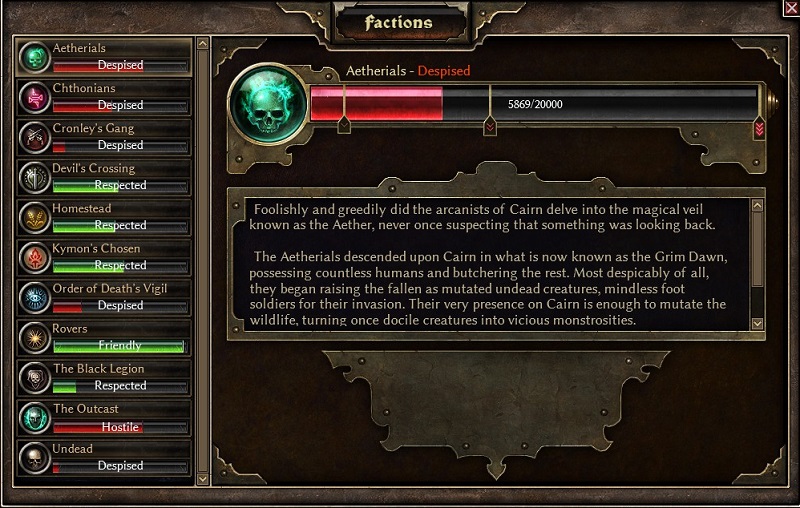
Faction grinding is something you tend to end up doing in this game. Thankfully you can gain it through a couple of different ways. Just from doing the main quest and even side quests you can gain a fair amount.

There are also hero monsters that have a start above their head that are much harder to kill that also grant faction, a larger amount of experience, and loot than a normal monster. I did find many of them to be much deadly on higher settings when compared to just normal monsters around them. Often times doing a gear check in the senesce of reminding me my resistance was way too low and getting murdered.
Like in much ARPG resistance plays a key role later on in-game and there are quite a few of them. You have your base elements such as fire, cold and lightning which I never struggled to protect against those. You also have stuff like poison, acid, and bleeding which I’ll admit often were my death even more so if damage over time was placed on me. I often could not out heal with a tonic if my resistances were too low for those. Finally, you have stuff like stun and many others. Making game knowledge key in the higher acts in what you need to prepare for.
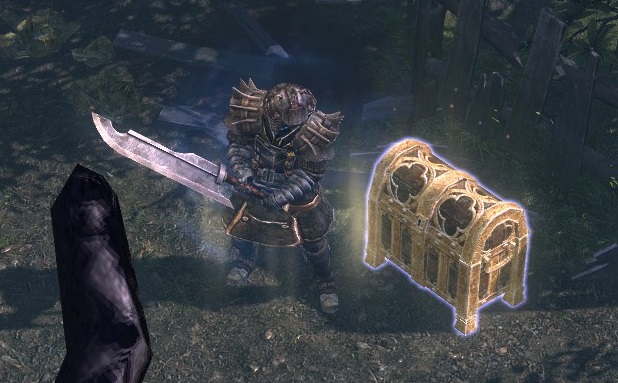
What really sets Grim Dawn apart from many other games is what they call One-Shot chests. Like the name implies each of your characters can only open it once hence one shot. This is my eyes gives the game the opportunity to overly reward the player at highest difficulties with sought after legendary without making it easy to farm devaluing them in both worth and that feeling of looting one.
This is rather important to the player economy as there are no in-game auction houses or as far as I could tell any supported external ones either. Iron Bits which are accepted by the vendors are considered quite worthwhile to trade for by players. As result players end up trading based on rarity for rarity in multiplayer games like the older Diablos games use to be. Instead of the more modern approach that Path of Exile has where certain crafting materials hold significant value in trading. The result I think gives more players the opportunity to afford the items they want if they can find someone willing to trade for what they have. Which is the sticking point in the old way of trading items and does require the player to work out when something has considerable worth or not.

The game also has a lot of what they call components. While these can be used in crafting at a blacksmith they can often be combined into a higher tier and attached to gear. I found this to be an excellent way of trying to fill gaps in my gear from resistance, damage or base attributes like physique, cunning or sprit if I needed a small boost. You can also destroy the item at a vendor to get the component back which I really loved as you are more willing to use what you need and not try and save to use on better gear later.
While you could find a place to sit and farm over and over you at least have some other options which I found to make acquiring gear in Grim Dawn more enjoyable. You still will need to do some grinding for the end game or difficulty increase of which I myself still have a ways to go on this front. Perhaps I’ll luck out and get an item drop that I can trade with another player for what I want.
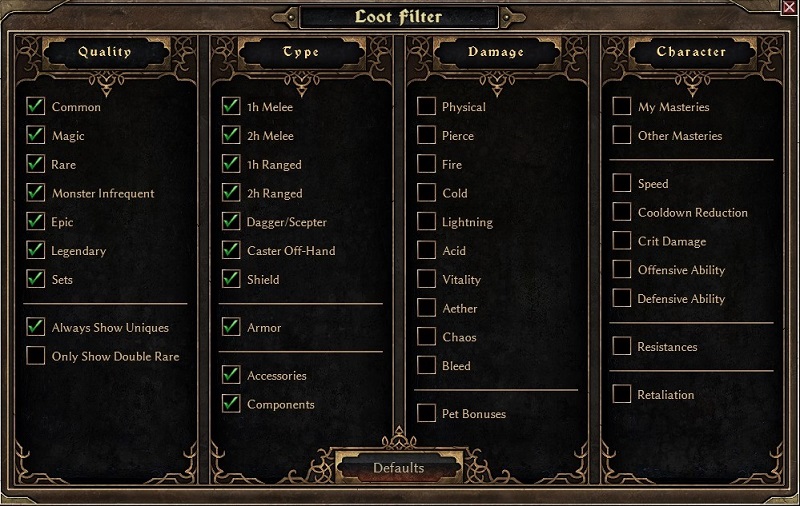
This one is a nice quality of life and I wish more games included some kind of option for it. While games like Path of Exile allowed you to create an external one to import with so many options it takes a while to make them. Grim Dawn goes one step further and allows you to create one in game. While it’s not as deep it was also easy to configure for the end user and I think that is the most important thing.
It’s simply a menu where you can click or unclick stuff you no longer want to see if it drops. This made it really easy after your first couple of levels filling out gear slots to no longer see the common or magic items ever again. You could even go one step further and only see if an item has a stat on it you want like fire or physical damage.
Not much else is needed to say about it. Wish I had noticed this feature sooner than I did! It’s simple and quick to configure. In this day and age, more games should just include it.
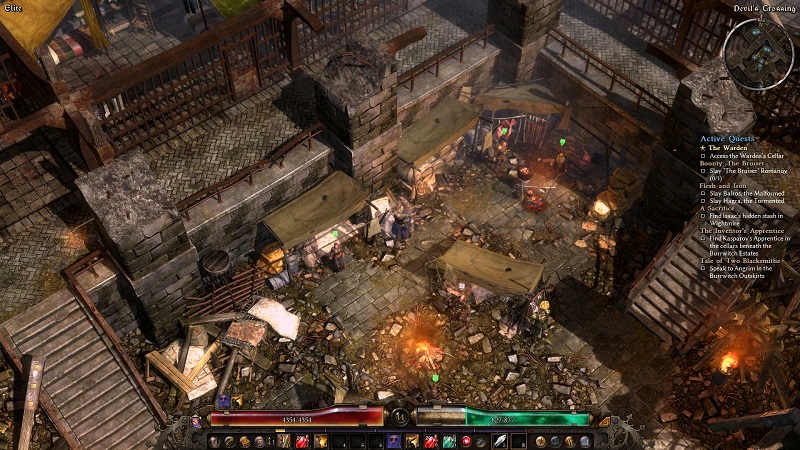
While there is a number of towns out there in the game this one was more like a home than anything else. You could somewhat upgrade it by doing quests and finding new NPCs out in the wild. So if you wanted to further invest in this place you could.
It was not quite like being able to decorate your own personal space. You could just see the aftermath of your actions. For instance there this one quest to collect cloth and naturally it helps improve the overall look of an otherwise run down dump you start off in. It certainly has that apocalyptic feel to it.
Some of the NPCs you found might give you further options but that was not always the case. Many times I would just find someone out in the world offer to invite them in and they gave me a small about of experience.
While I wish this was a bit deeper I also only played the base game. So I’m not quite sure if any of the DLC further expanded on this concept. It was at least nice to see some positive changes take place.

This I found a really fun element of the game since it was not as linear as you would find in many ARPG out there. While I had wishes the base game was longer there is a lot more to explore and find then what meets the eye. There are a number of hidden areas to uncover. Along with smart ways about keeping a player out of an area and them coming back later out to check out what they found.
It is always thrilling for me at least when you first stumble onto an area inside of a dungeon in a game and there no open way to get in there. Besides just finding the wall to break down to get into the hidden area there are some other ways about triggering a door to open into this hidden area to explorer. Sometimes they are a room and other times they are a full-on the area. I did wish there was a lot more of them but I could just be missing some myself as my map knowledge is not the greatest yet. I more than once discovered something in a higher difficulty after you replay the game again and going back to normal to clear it as well.
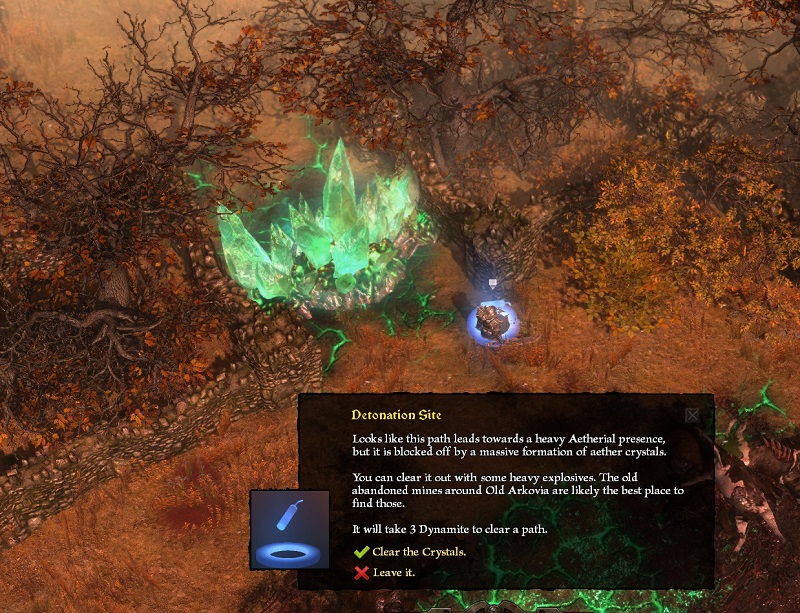
You also have physical barriers in the game where you need to collect an item or do a quest to remove them. There might be a bridge that is out that requires scrap metal to repair or rocks that have fallen that you need dynamite to blow them up with. In the very early stages of the game, you might not even have access to dynamite yet or skip over a quest that ended up being more useful then you thought. You then return after you have progressed enough to discover it was planned like that from the start and you might even still be lacking the gear to clear out the new area.
Grim Dawn also uses the damage as a deterrent to keep a player out of an area requiring you to return later if you really must know what it’s hiding. There were far more luring as you just think if I can just make it past the acid on the ground you are good to go. How very wrong I was sometimes trying to push past a point in this game has a way of teaching you a lesson to be more patience. Well-played game!
There were also a number of times I’d see an area I just could not work out at first how to get to. The game was cleaver a number of times to hide the path quite literately in plain sight. It also helps once you realize that there something is hidden there must be a way to it. I definitely found some spots I missed while playing in normal. It was also nice to have this part break up some of the liners keep moving forward thought process as you sometimes returned to an older part of the map.
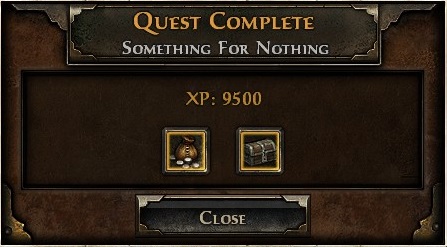
Grim Dawn is quite a solid ARPG and gave me a much-needed break from others I’ve played in the past with it being different enough to stand out. This is going on my list of games to play for whenever I need a break from everything else. I still have quite a ways to go and so many other class I want to try out. Not to mention I want some better gear. I’m been thinking of playing a pet based class next. They always seem to be quite fun in games like these.
Screenshots were taken and content was written by @Enjar about the game Grim Dawn

